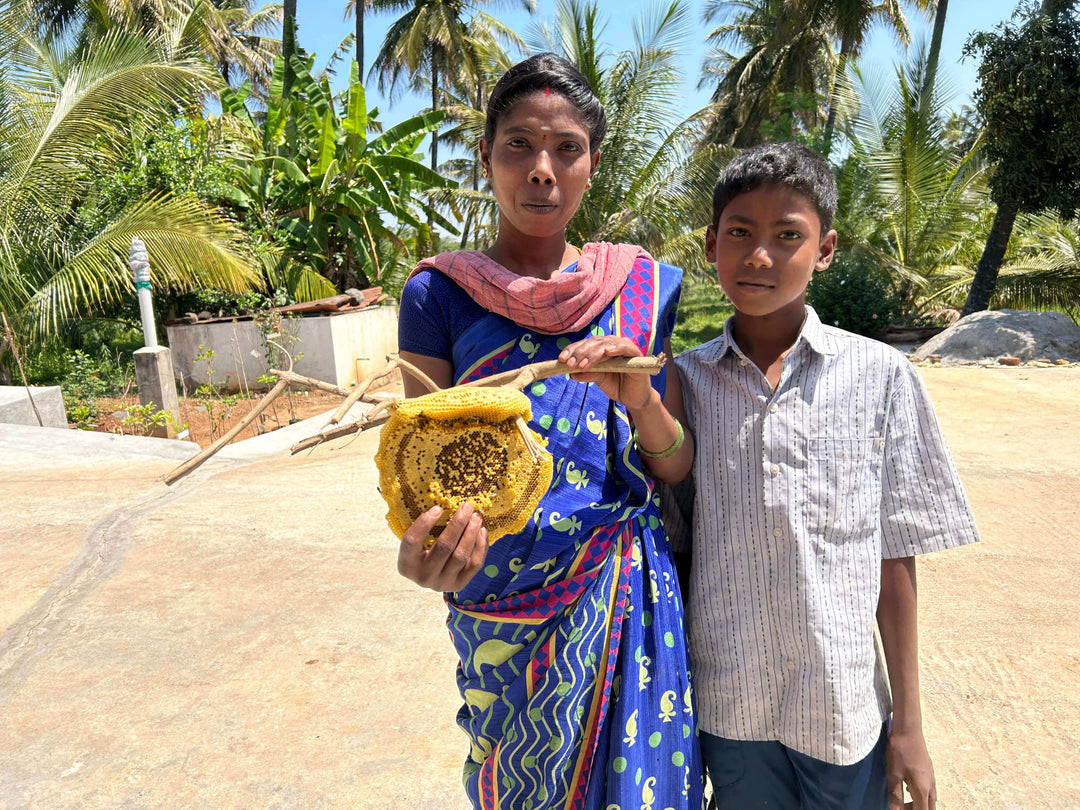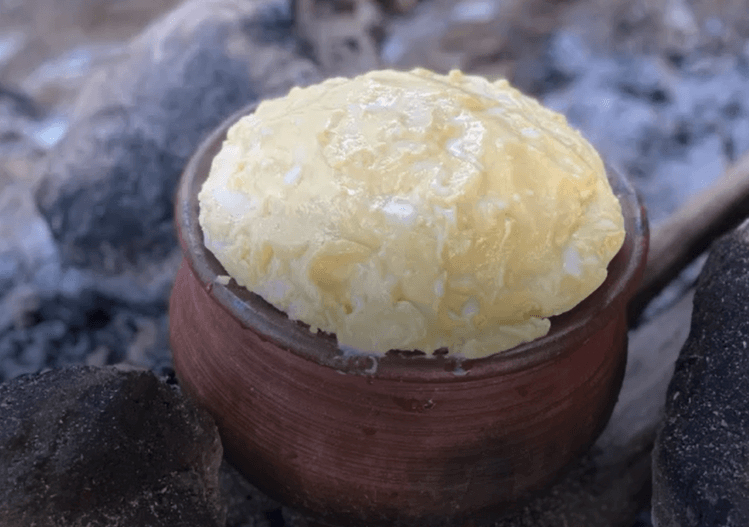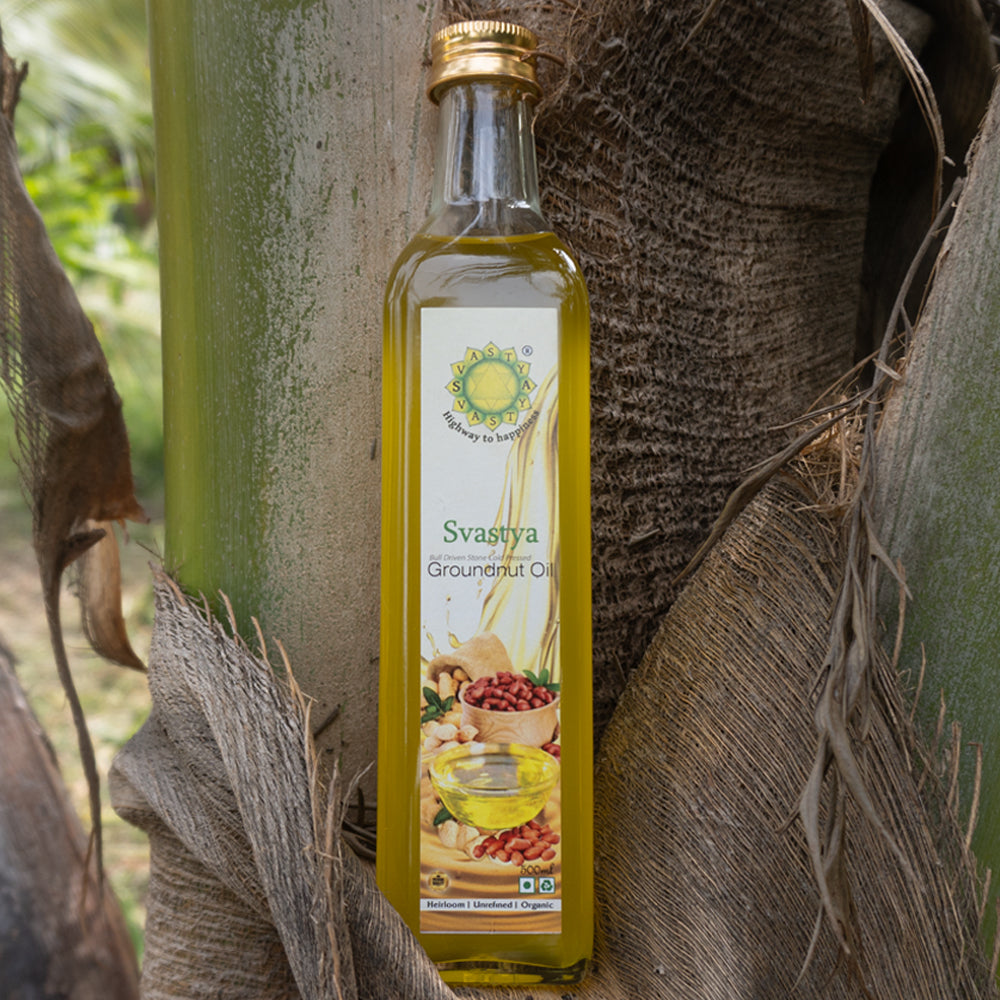Farming Organic Wild Turmeric
HOW THE ORGANIC WILD TURMERIC POWDER IS GROWN?

Svastya Organic farms Organic Wild Chinna Nadan Turmeric is a form of turmeric, a spice category, cultivated in the Kongu region of Tamil Nadu, Karnataka India. Our Turmeric is highly sought after due to its high Curcumin concentration. It is also well-known for its therapeutic properties and flavour.
The Government of India recognized it as a Geographical lndication officially since the year 2019.
The Chinna Nadan (Local Small variation) and Perum Nadan are the two principal types of Organic Wild turmeric (Local Big variety). We cultivate the Chinna Nadan kind of Organic Wild Turmeric.
Organic Wild turmeric is a year-round crop.We sow it in May (Vyyasi) and harvest it in March (Pangani).The planting process is totally dependent on geolocation and pre-monsoon precipitation.
Process of cultivation
1. Land preparationThe land is first ploughed with a cultivated plough, then with a disc plough. 8 tons of organic farmyard manure and 120 kg of neem cake are integrated into the soil per acre.

2. Seed rhizome selection
-
Organic Mother rhizomes are better yielders than Organic finger rhizomes. Good quality healthy rhizomes of previous crop preserved for next sowing.

-
It is necessary to store the seed rhizomes for 2-3 months from harvesting to planting. This may be done by spreading them thinly under a cover of turmeric leaves or coconut leaves.
-
Well-developed, healthy and disease free rhizomes are selected
3. Planting.
-
Planting is done by dibbling rhizome in furrows behind the country plough.
-
The seeds are then covered with loose soil from the ridge
-
The crop can be planted on flat beds or on ridges, on large scale potato planter can be used for turmeric planting.
-
Emergence of seedlings takes place 2-4 weeks after sowing.

-
45cm between rows and 15cm among plants and 4cm depth, followed in single row system of planting.

-
Onion, Coriander and Fenugreek can be planted as intercrop on the sides of the ridges 10 cm apart (250 kg seed Onion/ha). Redgram and Castor can also be planted at wider spacing. Weeding can be done as and when necessary. The plants are earthed up at the time of 2nd and 4th top dressings.
4. Harvest
-
The plants will start lodging in about nine months. Yellowing and drying of leaves are the signs of crop maturity. The rhizomes are picked after digging deeply with mammuttis or digging forks. Harvested rhizomes were separated as fingers and mother rhizomes to enable easy boiling and grading.

5. Cleaning of rhizomes
-
Finger rhizomes are separated from mother rhizomes for perfect boiling, since the mother rhizomes are bigger in size they take more time to boil.

6. Boiling of turmeric rhizomes
Fresh turmeric is cured for obtaining dry turmeric. The fingers are separated from mother rhizomes. Mother rhizomes are usually kept as seed material. Curing involves boiling of fresh rhizomes in water and cow dung slurry.
In the traditional method of curing, the cleaned rhizomes are boiled in water just enough to immerse them. Boiling is stopped when froth comes out and white fumes appear giving out a typical odour. The boiling should last for 30-45 minutes when the rhizomes turn soft. The stage at which boiling is stopped largely influences the colour and aroma of the final product. Over cooking spoils, the colour of the final product while under-cooking renders the dried product brittle.

7. Drying
8. Polishing
Dried turmeric has a poor appearance and a rough dull outer surface with scales and root bits. The appearance is improved by smoothening and polishing the outer surface by mechanical rubbing. Mechanical rubbing is by using a power operated barrel or drum mounted on a central axis, the sides of which are made of expanded metal mesh. When the drum filled with turmeric is rotated, polishing is affected by abrasion of the surface against the mesh as well as by mutual rubbing against each other as they roll inside the drum. The yield of polished turmeric from the raw material varies from 15-25%.The colour of the processed turmeric influences the price of the produce.

9. Pounding
Rhizomes that have been processed are stone pounded in batches and the yellow gold is ready to be bottled.

It takes about a year and a half to create a pinch of the organic wild turmeric that we use, from sowing to bottling. Enjoy it wholeheartedly and let's express gratitude to the panchabhootas, the soil, and the farmers.









